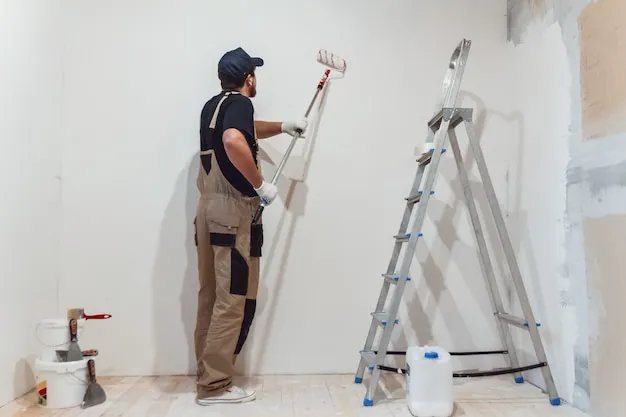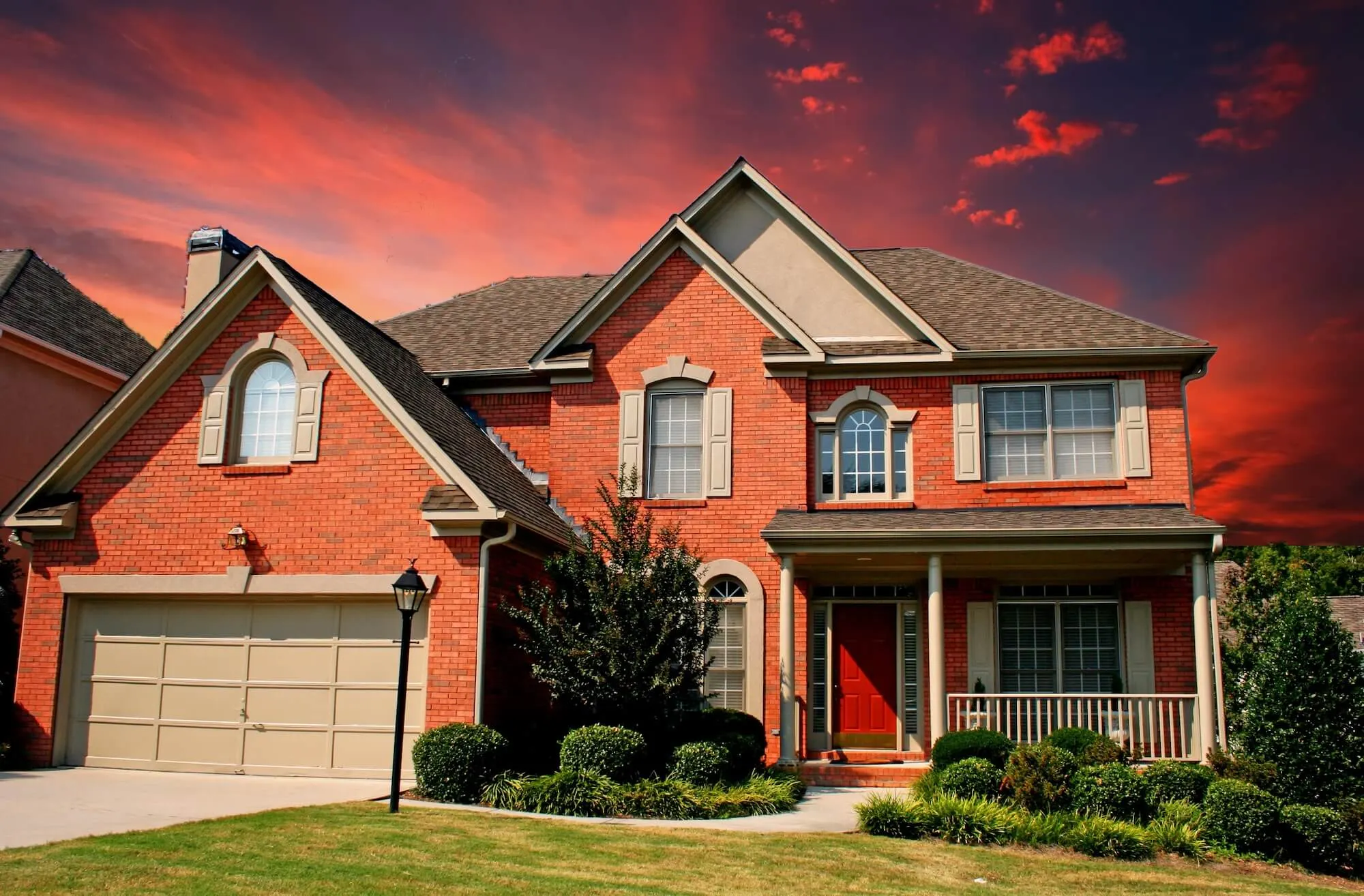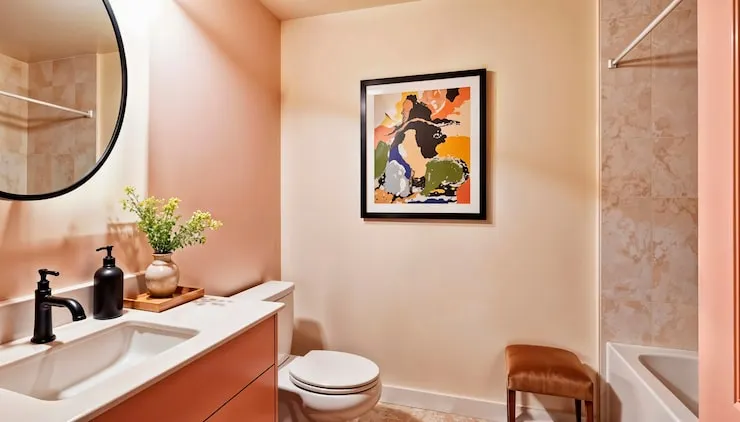Most homeowners think all paint does the same job, but the truth is that interior vs exterior paint is not interchangeable. Using the wrong one in the wrong place can mean peeling walls, fading colors, or even wasted money on a project that does not last.
Understanding how interior and exterior paint differ can save you from expensive mistakes and help your home look its best year after year.
When you know the science behind the formulas, the differences in durability, and where each type works best, you make smarter decisions for your walls, trim, and siding.
This guide takes you through every key factor so you can confidently choose the right product for your next project.
The Purpose Behind Each Type of Paint
The first step in comparing interior vs exterior paint is looking at the job each product is designed to do.
- Interior paint focuses on beauty and easy maintenance. It is made to resist scuffs, scrubbing, and stains that come from daily life inside a home. Kids, pets, cooking, and constant touch all create challenges that interior paint is built to handle.
- Exterior paint is built for battle against the elements. Sun, rain, wind, humidity, and temperature swings are constant threats outdoors. Exterior paint formulas include weather-resistant binders and additives that allow the surface to expand and contract without cracking.
Interior paint vs exterior paint is more than just a labeling difference. Each one is a carefully engineered formula for its environment. If you swap them, the results do not hold up.
For example, using exterior paint inside may sound like it would last longer, but it actually can release higher levels of VOCs, which are not safe indoors. On the other hand, interior paint used on siding will peel in months.
Key Ingredients and Their Roles
Paint is more than color in a can. Its performance depends on the balance of three main components: resins, pigments, and additives. Looking closely at these helps explain why interior vs exterior paint is not the same.
- Resins and Binders: Interior paint uses rigid resins that dry hard and smooth. This allows for a polished look and easy cleaning. Exterior paint uses flexible binders that bend and stretch as the siding expands in heat and contracts in cold. This flexibility prevents cracking and peeling.
- Pigments: Interior paint often features vibrant pigments that highlight design choices. Exterior paint uses pigments designed to resist fading from UV rays. Missouri’s strong summer sun makes this difference critical for homeowners in St. Louis and surrounding areas.
- Additives: Interior formulas may include stain blockers, mildew-resistant chemicals for bathrooms, and scrubbable finishes. Exterior paints add stronger mildewcides, dirt resistance, and compounds that guard against moisture damage.
Interior paint vs exterior paint shows a fundamental divide: one optimizes for appearance and indoor wear, the other for weather and long-term protection.

Durability and Environmental Resistance
When people ask about exterior paint vs interior paint, durability is often the deciding factor. Indoors, walls are protected from sun, rain, and temperature changes. Paint needs to withstand scuffs, food splatters, and cleaning products.
Outdoors, the environment is harsher, and the paint must protect your biggest investment: your home.
- Interior paint durability: Can last a decade or longer, especially in low-traffic rooms. Kitchens, bathrooms, and kids’ rooms may need repainting sooner because of higher wear.
- Exterior paint durability: Typically lasts five to seven years depending on climate. In humid areas like St. Louis, mildew, rain, and freezing winters reduce the lifespan.
Choosing professional exterior painting services ensures that surfaces are prepped and coated properly to withstand these conditions. Understanding exterior vs interior paint highlights why the two cannot swap roles. Each is durable only in its intended environment.
Finish Options and Where They Work Best
Another way interior vs exterior paint differs is in the finish options available. Finish affects shine, durability, and how imperfections show.
- Flat/Matte: Popular indoors for ceilings and low-traffic walls. Hides imperfections well. Outdoors it absorbs moisture and dirt, which makes it a poor choice.
- Eggshell/Satin: A versatile middle ground. Satin is popular for interior hallways, kitchens, and trim. It is also common for exterior siding because it balances durability with easy cleaning.
- Semi-Gloss/Gloss: Durable and washable, making it perfect for cabinets, doors, and trim. Outside, gloss highlights features like shutters or doors but can show flaws on large surfaces.
When considering exterior paint vs interior, the right finish ensures long-term satisfaction. For instance, a high gloss exterior siding may look good initially but will show every bump and seam. Indoors, a matte finish in a busy kitchen will be hard to clean.
For expert recommendations, explore interior painting to see which finishes work best for each room in your home.
Health and Safety Factors
The health and safety differences in interior vs exterior paint are often overlooked.
- Interior paint: Usually formulated to be low-VOC or zero-VOC. This matters because indoor air quality affects your health. You spend hours every day inside, so breathing in fumes is not an option.
- Exterior paint: Contains higher VOCs, which is acceptable outdoors where ventilation disperses them. These stronger formulas also help the paint resist mold, dirt, and extreme conditions.
The question of exterior vs interior paint is not only about performance but also safety. Using exterior paint indoors is unsafe, while interior paint outdoors is ineffective.
Lifespan Expectations
The lifespan of interior vs exterior paint depends on location, preparation, and quality of materials.
- Interior lifespan: Five to ten years before repainting is needed. Living rooms and bedrooms may hold color longer than high-traffic areas like hallways or kitchens.
- Exterior lifespan: Five to seven years is average, though premium products and proper preparation can stretch this longer. In St. Louis, heavy rains and hot summers shorten the cycle.

When people search for exterior vs interior paint advice, lifespan is a key concern. The cost of repainting a home’s exterior is higher than repainting a bedroom, making professional application essential for protecting your investment.
Learn more about **Better Painting** and how professional prep extends the life of your paint.
Application Differences
Interior paint vs exterior paint also differs in how it is applied.
- Preparation: Indoors, painters repair drywall, patch nail holes, sand, and apply primer. Outdoors, preparation involves scraping peeling paint, pressure washing, sealing cracks, and sometimes repairing siding.
- Tools and techniques: Rollers and brushes dominate interior work, while sprayers are often used outside for efficiency. Ventilation matters indoors to reduce fumes. Outdoors, weather windows are critical—too hot, too cold, or too humid and the paint may not cure properly.
- Timing: Interior projects can be done year-round. Exterior work is seasonal in Missouri due to temperature and humidity limits.
This distinction in exterior paint vs interior explains why hiring professionals matters. They understand not only the formulas but also the timing and tools required for lasting results.
Common Misconceptions Homeowners Have
Many homeowners misunderstand interior vs exterior paint. Here are the most common myths:
- “Leftover interior paint can be used on the deck or garage siding.” It will peel within months because it is not made for moisture and temperature swings.
- “Exterior paint is tougher, so it must be better indoors.” Wrong. The stronger resins in exterior paint release fumes unsafe for enclosed spaces.
- “All paint is washable.” Only certain interior finishes are scrubbable without damaging the surface.
- “Any brand works the same.” Premium products like Fine Paints of Europe or Farrow & Ball are designed for specific performance and aesthetics, offering better results indoors and outdoors.
Knowing the truth behind these misconceptions clarifies the interior paint vs exterior paint debate and helps you avoid costly errors.
Choosing the Right Paint for Your Project
When comparing exterior vs interior painting jobs, the right choice depends on where and how the paint will be used. Ask yourself:
- Will this surface face weather, moisture, or direct sunlight?
- Do I need stain resistance, easy cleaning, or a smooth finish?
- What is my priority—appearance, durability, or both?
If you are still unsure, professionals can match the right product to your needs. With services ranging from interior painting to exterior painting, Better Painting ensures your home gets the right treatment in the right place. For personalized guidance, reach out today through our contact page.
Conclusion
Interior vs exterior paint is more than a label. The differences in purpose, ingredients, durability, finishes, safety, lifespan, and application all prove why each belongs in its own environment. Interior paint is made for beauty, smooth finishes, and easy maintenance.
Exterior paint is built to protect your home from sun, rain, and extreme temperatures.
The next time you are planning a project, remember the question of interior paint vs exterior paint is not just technical—it protects your health, your comfort, and your home’s value.
By making the right choice and trusting experienced professionals, your walls and siding will not only look great but also last longer.







